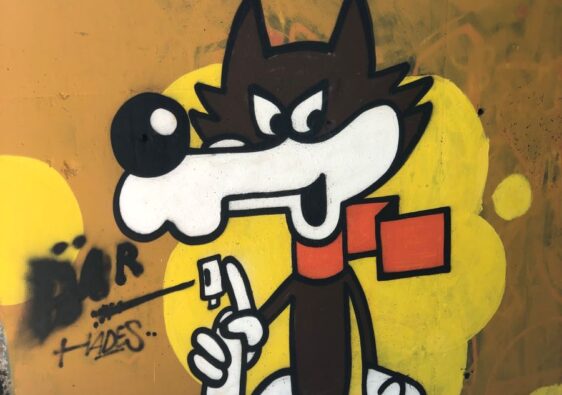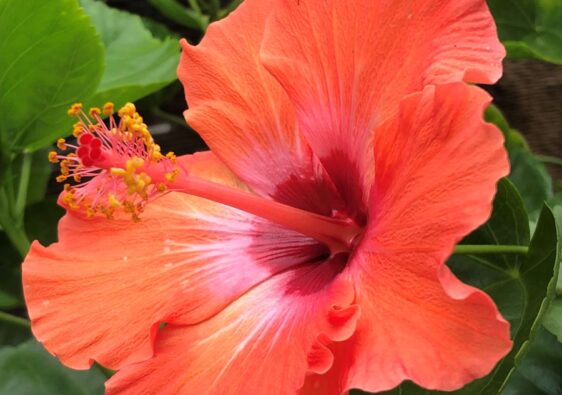It is an interesting subject and one that is quite nuanced. When I first arrived, I had seen photos, but nothing prepared me for the reality of the situation. It is one of the reasons I find the city so fascinating and you might too. Why is beautiful Skopje The City of Statues? I’ll try and explain.
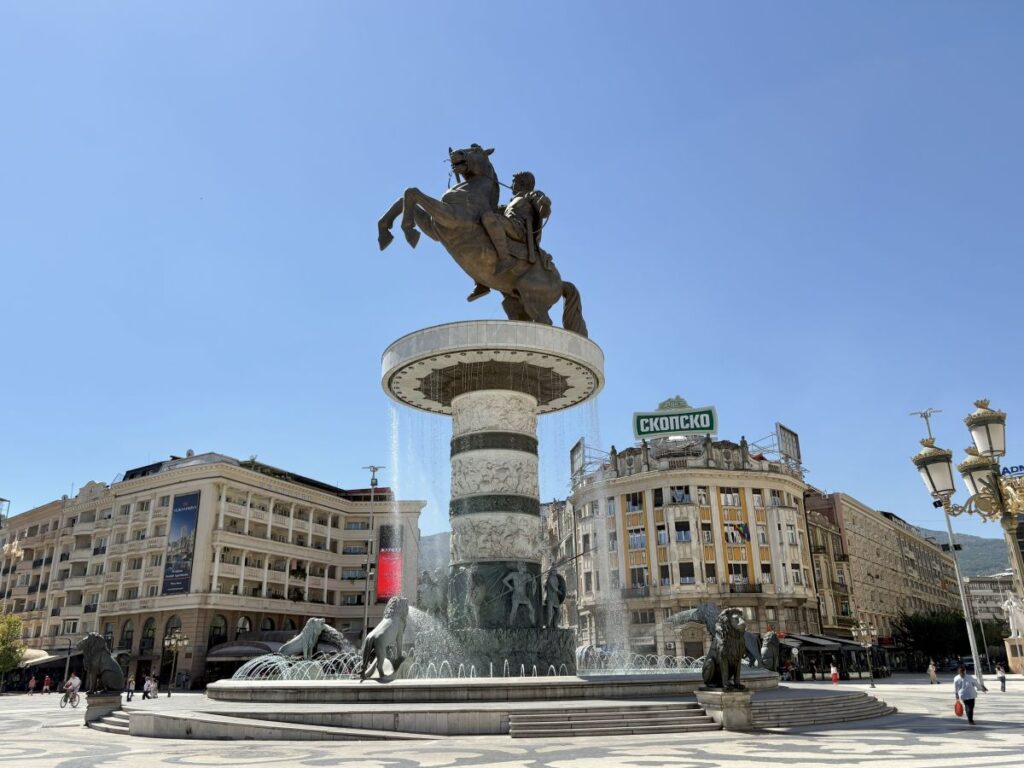
Brief History
Skopje has been around for thousands of years, since 4,000 BC in fact. It has been ruled by many, changing hands frequently. In 1963, the city was devastated by a massive earthquake. So large in fact, that 80% of the buildings were left in ruins. All of its historical architecture gone. Old mosques, churches, neoclassical buildings gone.
At that time, the city was part of Yugoslavia, a communist nation. In order to provide housing for the thousands of people left homeless by the quake, large utilitarian concrete buildings were erected. Twenty years later, the landscape of the city is dreary. These same buildings dominate, are run down, ugly. Yugoslavia begins to break apart and the region is in turmoil. Once the dust settles, the Republic of North Macedonia emerges in 1991.
Another fifteen years passes and a new government decides it is going to transform the face of the capital city. A project called ‘Skopje 2014’ is approved and the rest is history.
Skopje 2014
Given this name because all projects were to be completed by then, it is an all-encompassing plan. Millions of euros are spent, to transform the city, make it appealing to tourists and bring culture and history back. The main aim of the project was to erect government buildings, museums, learning institutes and monuments that would reflect the history of the country.

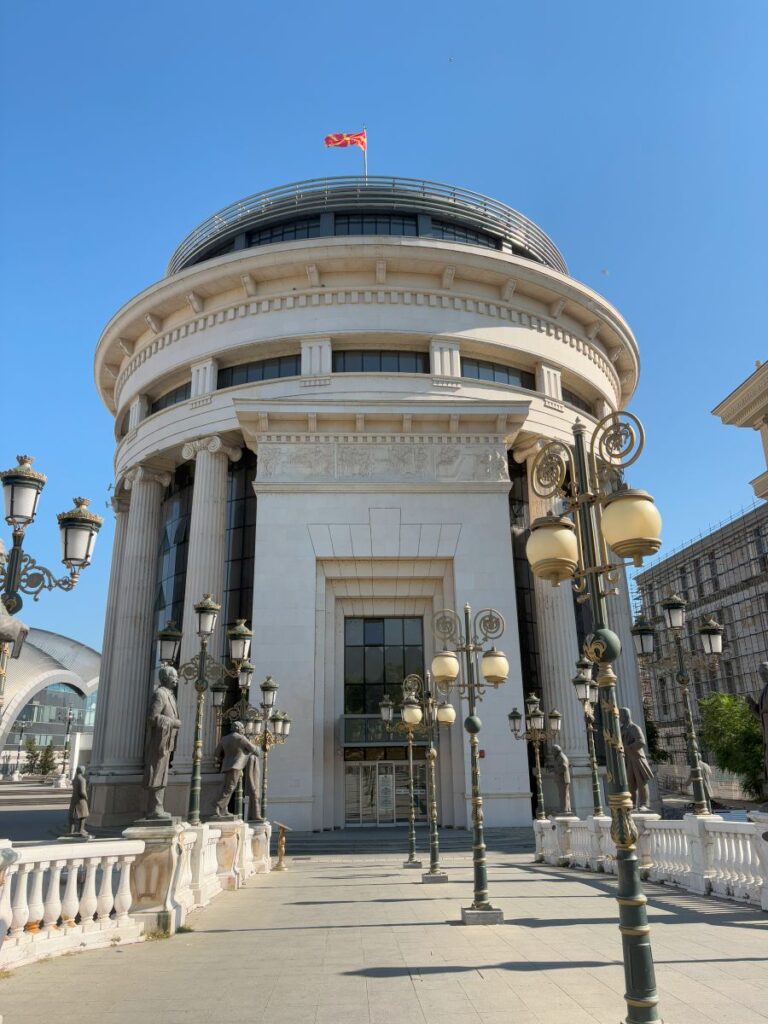

The project was not met with open arms from the public. They protested that the money should be spent on infrastructure, hospitals and facilities for the poor, of which the percentage of the population is high.
The end result was €700 million spent between 2010 and 2014 on the construction of 134 structures. What was built you ask? Two completely new bridges and three others renovated. Four massive buildings along the Vardar River in the Neoclassical style. Multiple streets where all the buildings had their facades redone, again in the Neoclassical style.
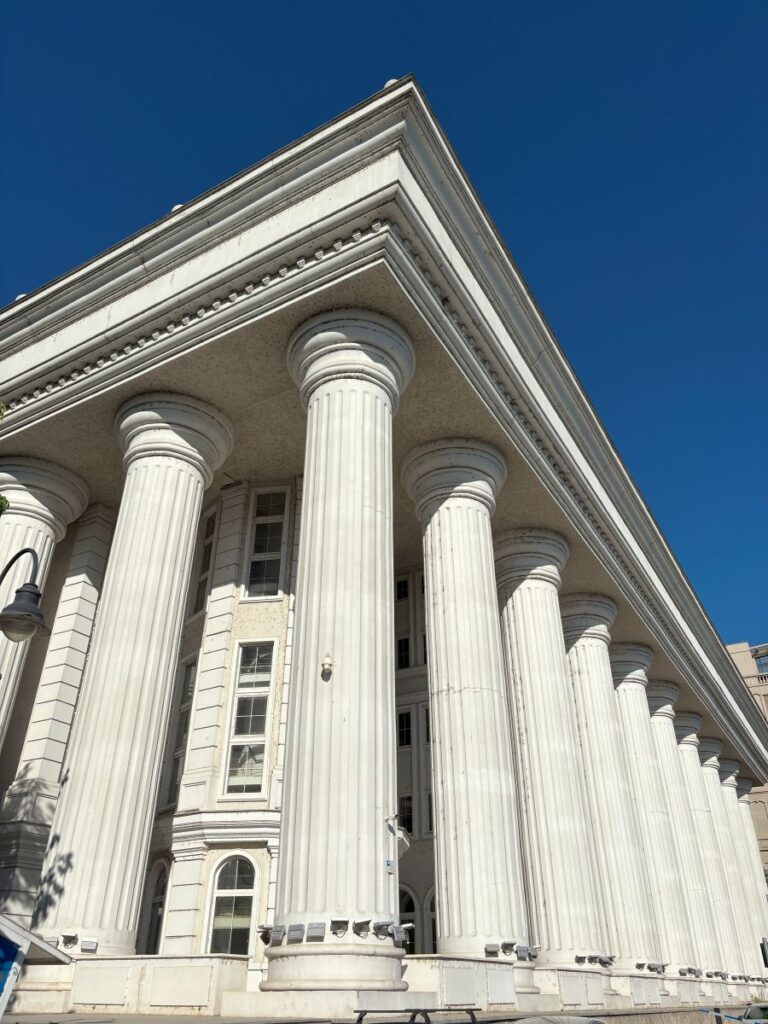


Eight large government buildings, four massive ships docked in the river, fountains, the reconstruction of the Kale Fortress, reconstruction of three of the main squares, the restoration of the historical buildings in the Old Bazaar. Buses, 202 red double decker buses were purchased, two prominent hotels and even parking garages.
And what now numbers at over 300 statues!
Warrior on Horseback
The most prominent statue and one that garners the most attention is that of Alexander the Great. Officially referred to as the ‘Warrior on Horseback’ because of blow back from Greece, this monolith stands proud and centre in Macedonia Square. All told he is 24.5 meters tall!
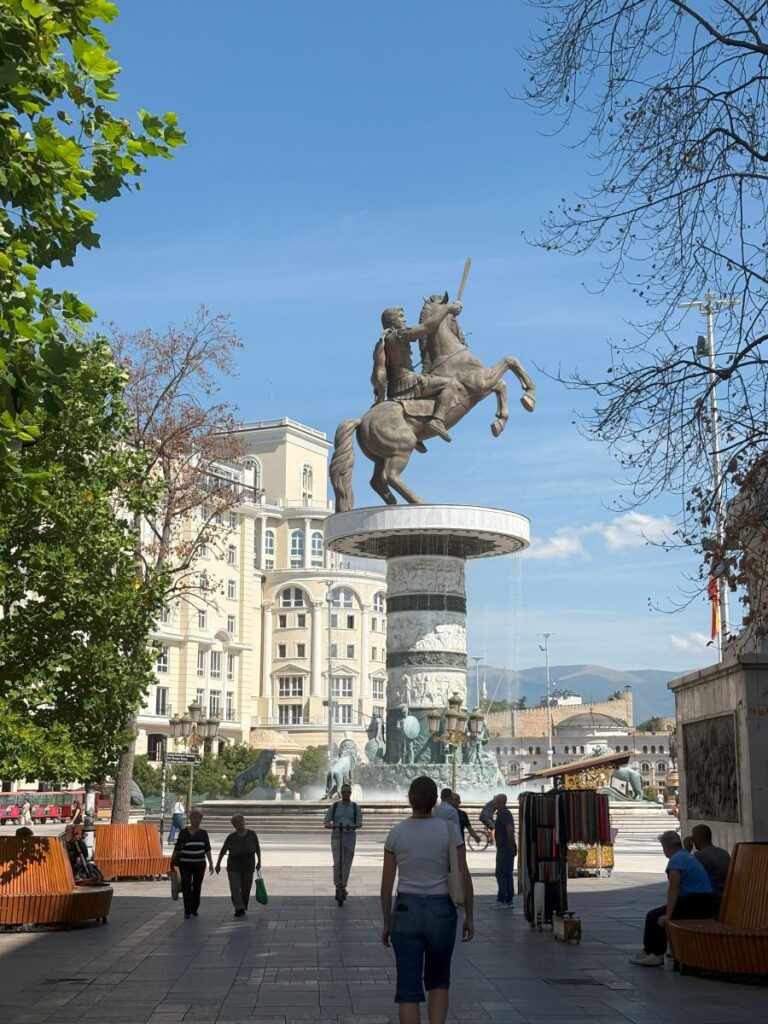

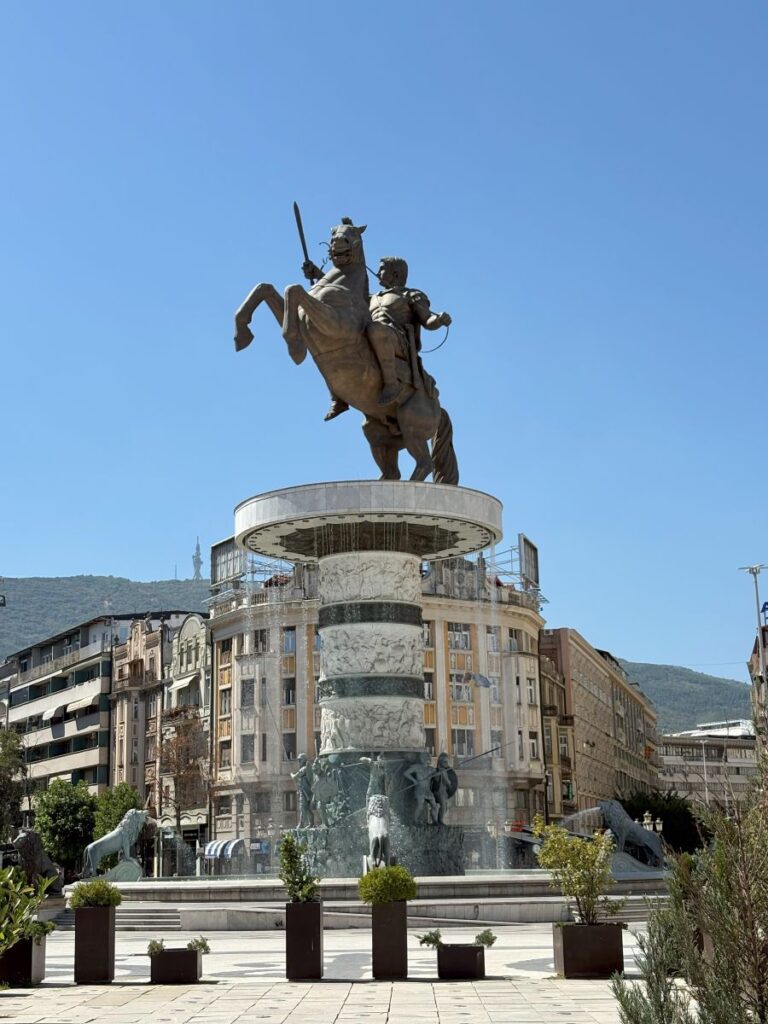
An incredible fountain, column carved and flanked with Roman soldiers and the entire thing encircled by lions. Created in Florence, it is magnificent, there is no other word for it. Other squares have statues almost as large such as Philip II of Macedon in Rebellion Square.
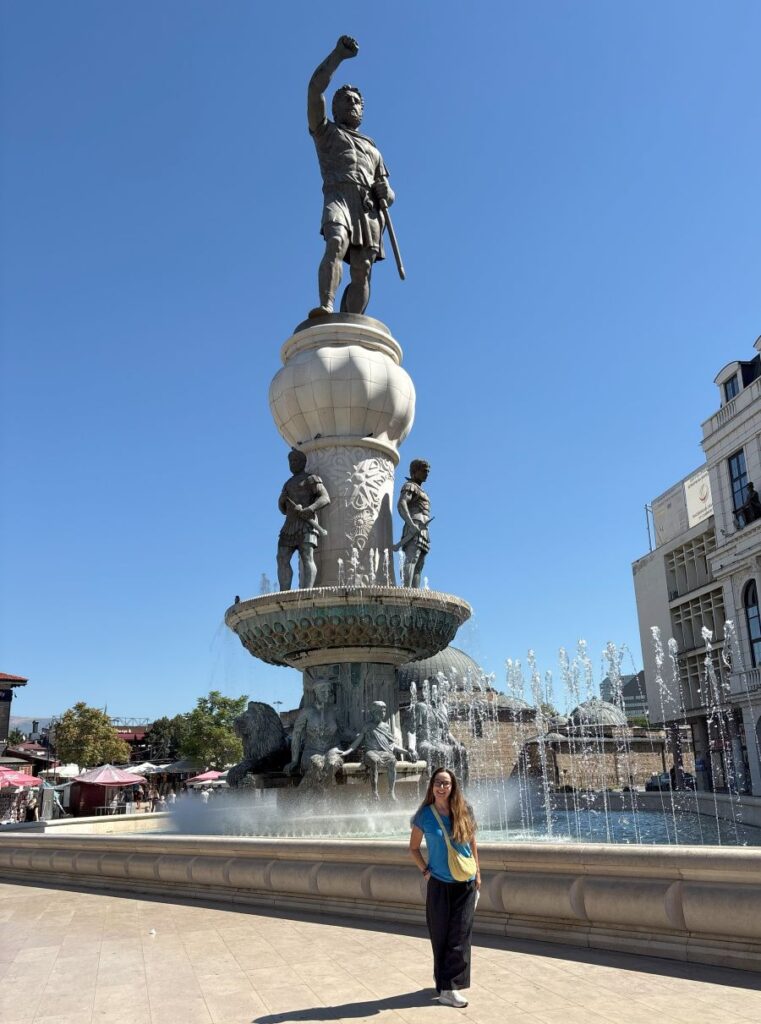
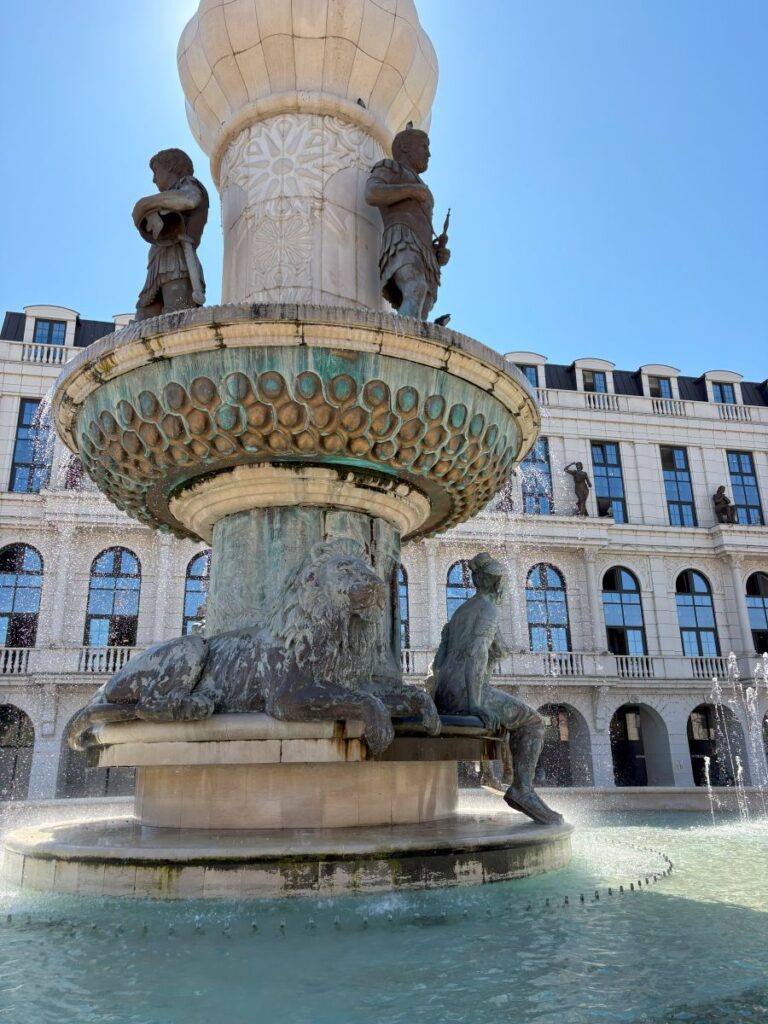
Fighters on Horseback
A very frequent type of statue that visitors will see often is that of fighters on horseback. This is where we get an obvious link to the historical statues returning to the city. If one looks at old black and white photos of the city from the early 20th century, there are large scale statues in the city centre. Warriors on horseback, flanking the bridge that crosses the Vardar River.

These massive bronze beasts are everywhere it seems and most wielding firearms. The sit atop great pedestals that are often decorated with reliefs of battle scenes.
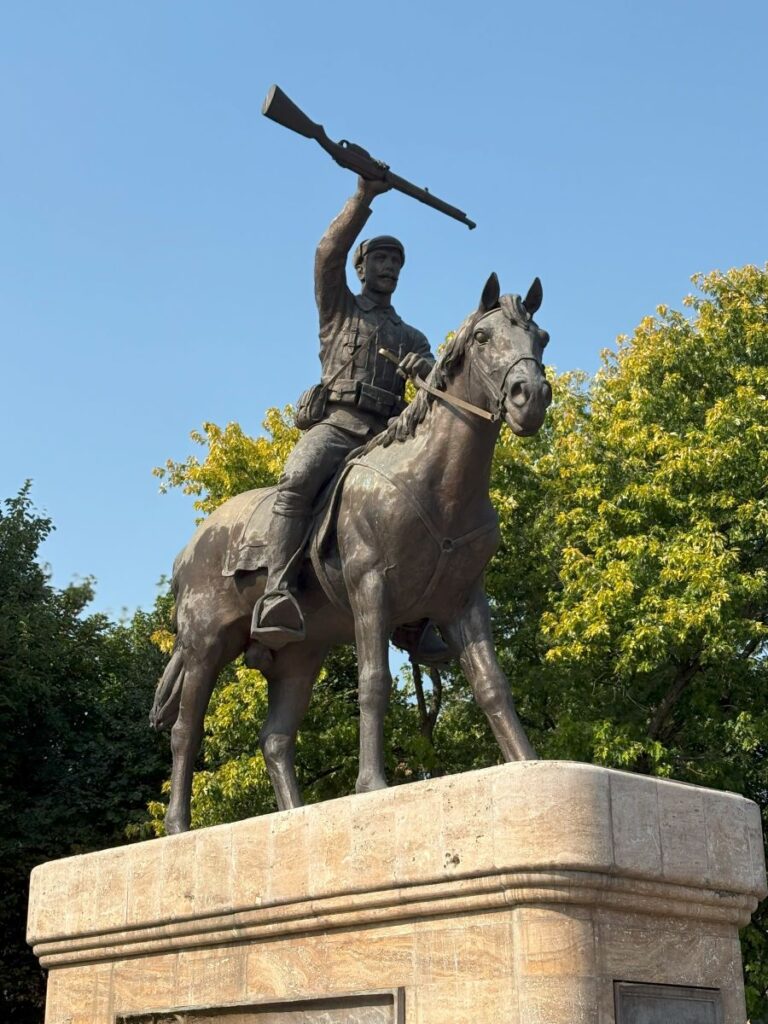
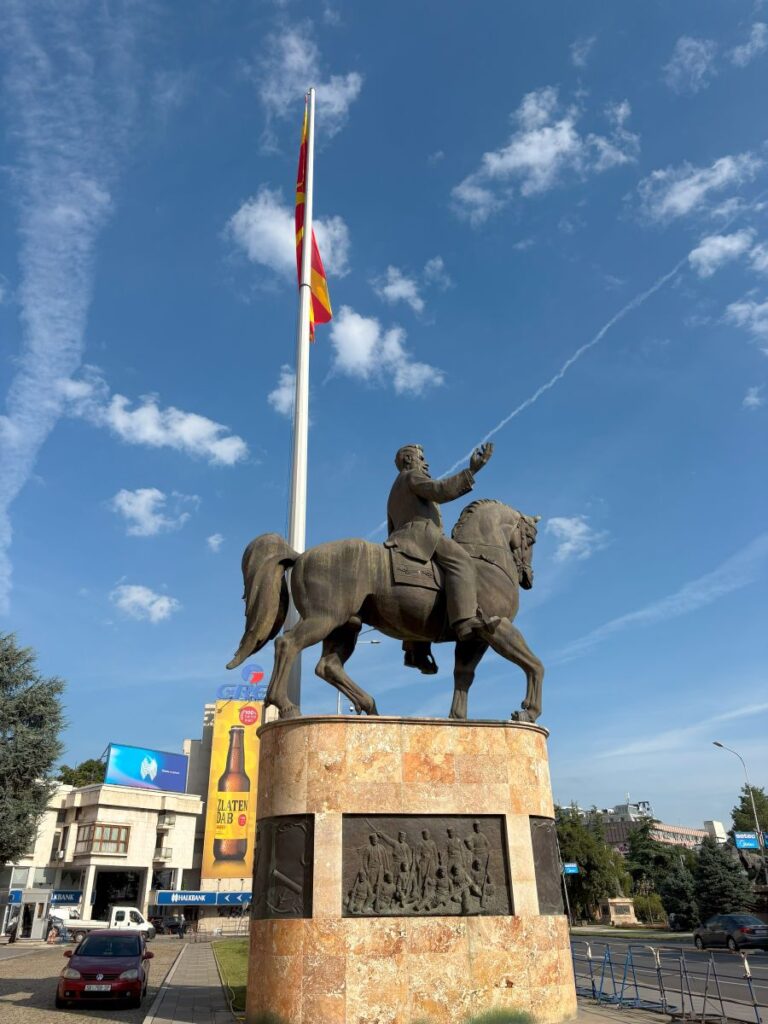

Fallen Heroes of Macedonia
Located in Zena Borec Park is this multi level and elaborate set of statues. Sparkling white in the summer sunshine, it’s a sight to behold.

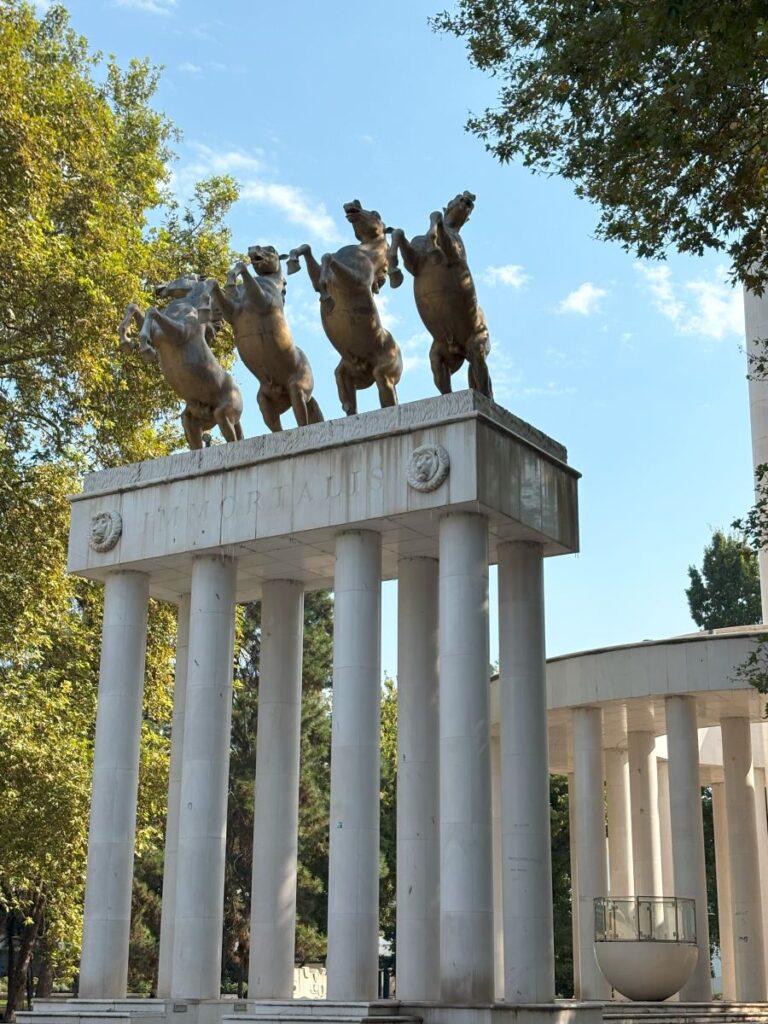
There are several other grand statues in this park, that is on the main street in the city, 11th October St. One statue in particular stands out, called ‘Monument to the Woman Fighter’ which commemorates the role of women in WWII. Ironically it only contains one single female surrounded by a group of men.
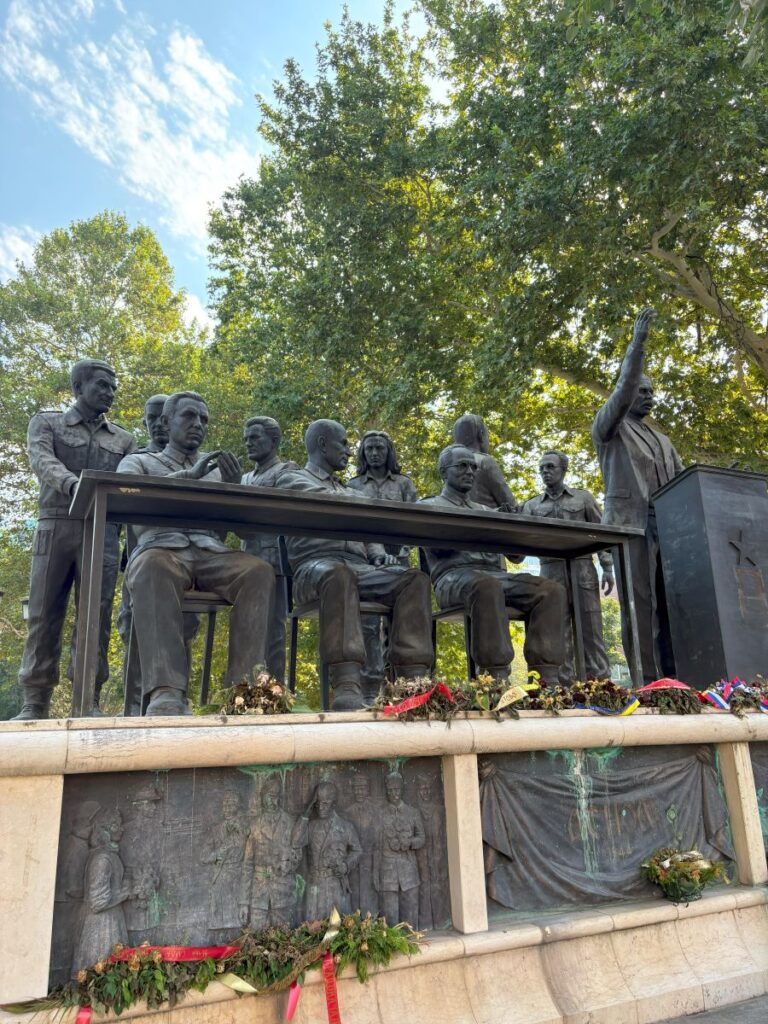
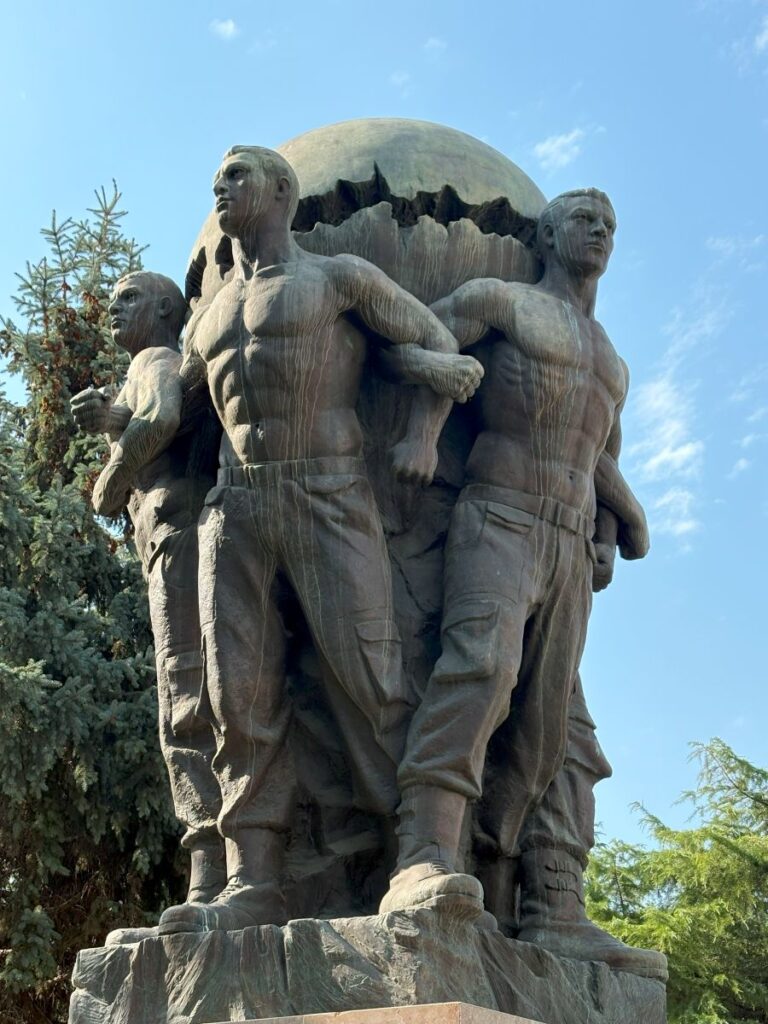

Mother Theresa
Did you know that Mother Theresa was born in Skopje? Yes indeed, the foundations of the family home are in a tiny green space right in the middle of the city. There are many monuments dedicated to her and also ‘Mother Theresa Memorial House’ separate from her birth home.
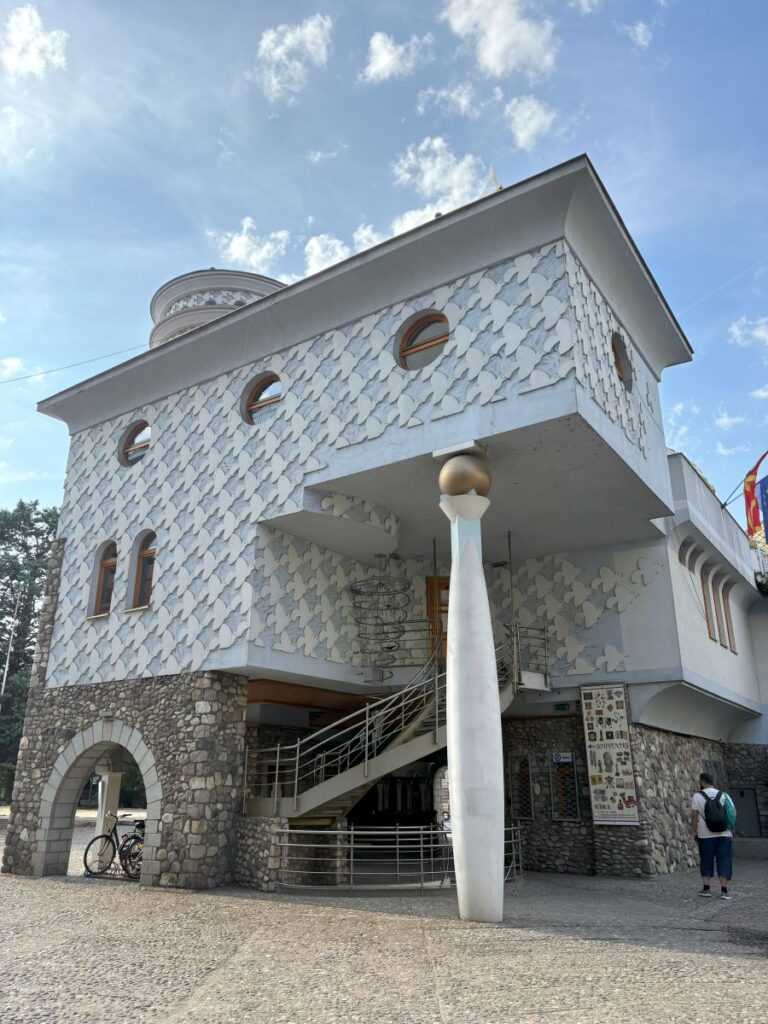
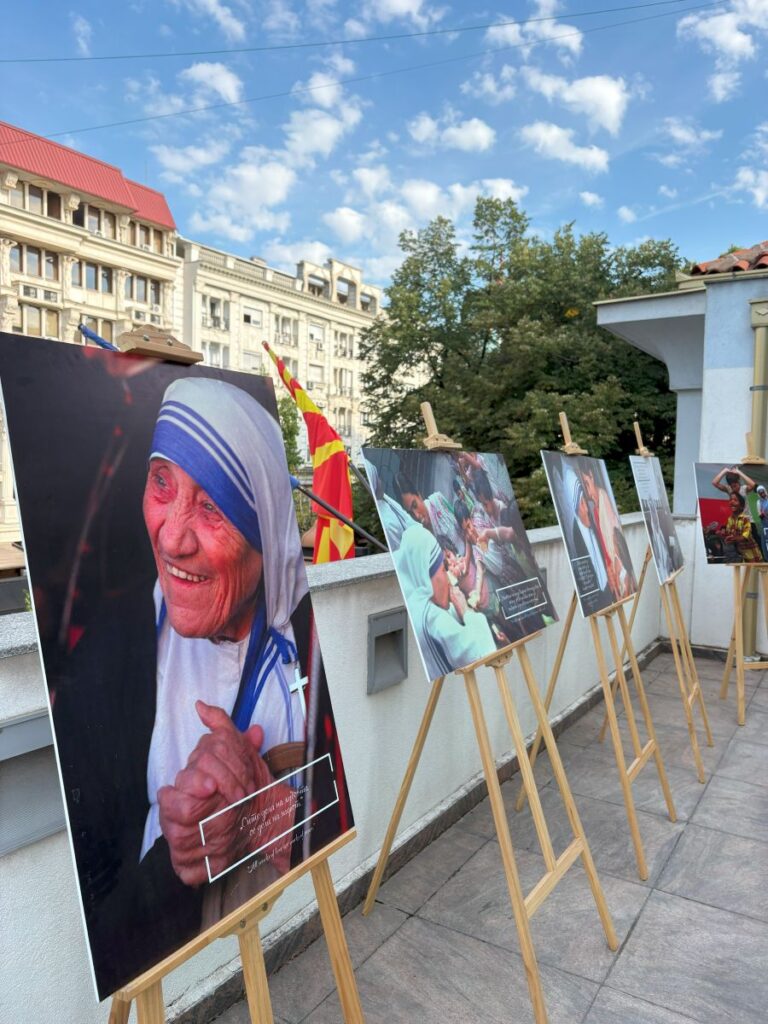
She is such a significant figure in the more recent history of the city, and many statues, landmarks and organizations can be seen that honor her.
Not All are Bronze
Most of the monuments are made of bronze from wax cast, but not all. There are some mammoth white marble ones, mostly in Macedonia Square. They are of Justinian I born just outside of Skopje, and Tsar Samuil. Both are seated on a throne and were hand carved in Florence in 2011.
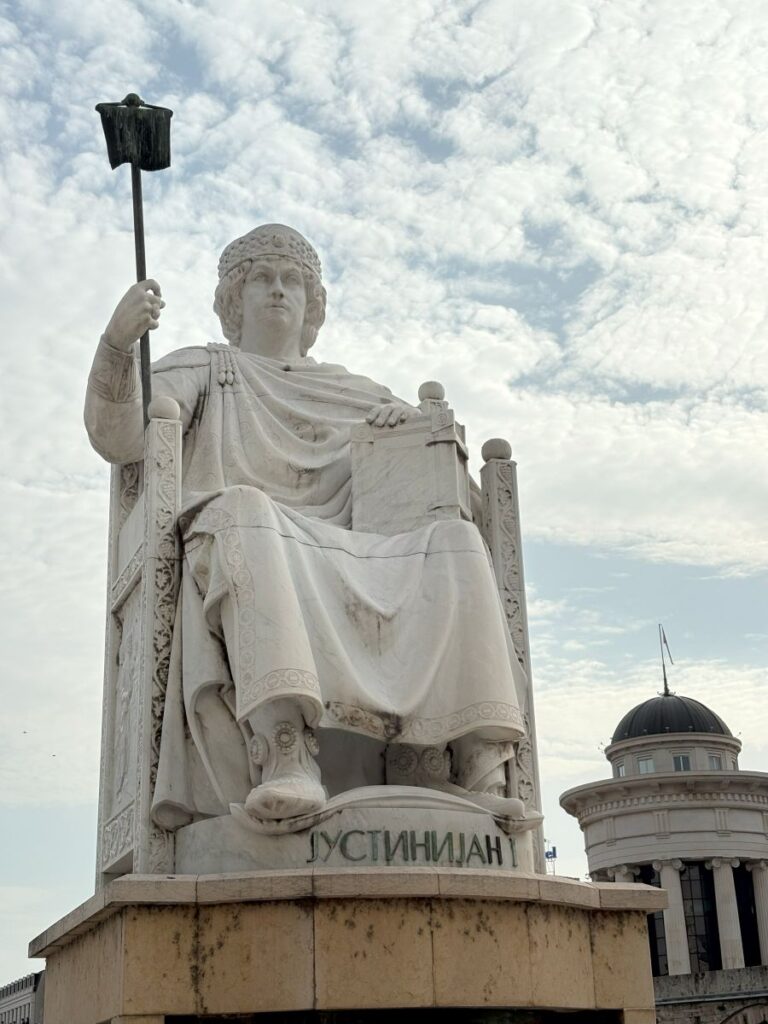

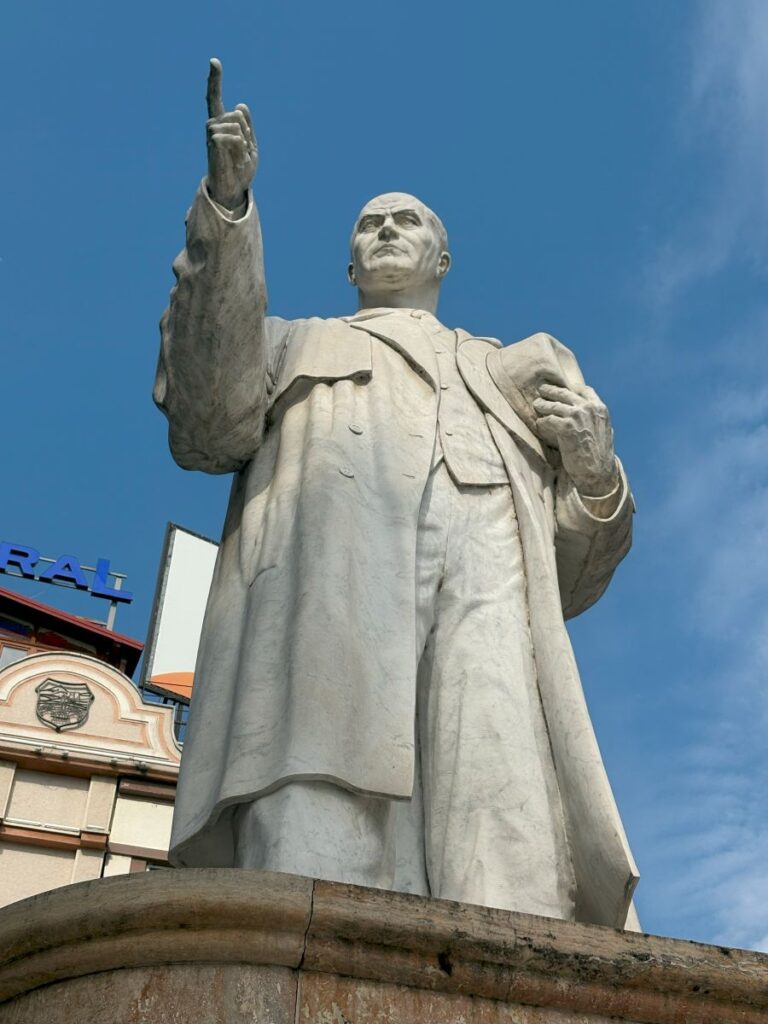
Odd Balls
With so many of these statues being of fighters and war related, one does get a little immune to their presence. Alas, there are other statues, smaller and a little hidden from the main thoroughfares. These become like a treasure hunt, when a new one is spotted, it feels like winning a prize.
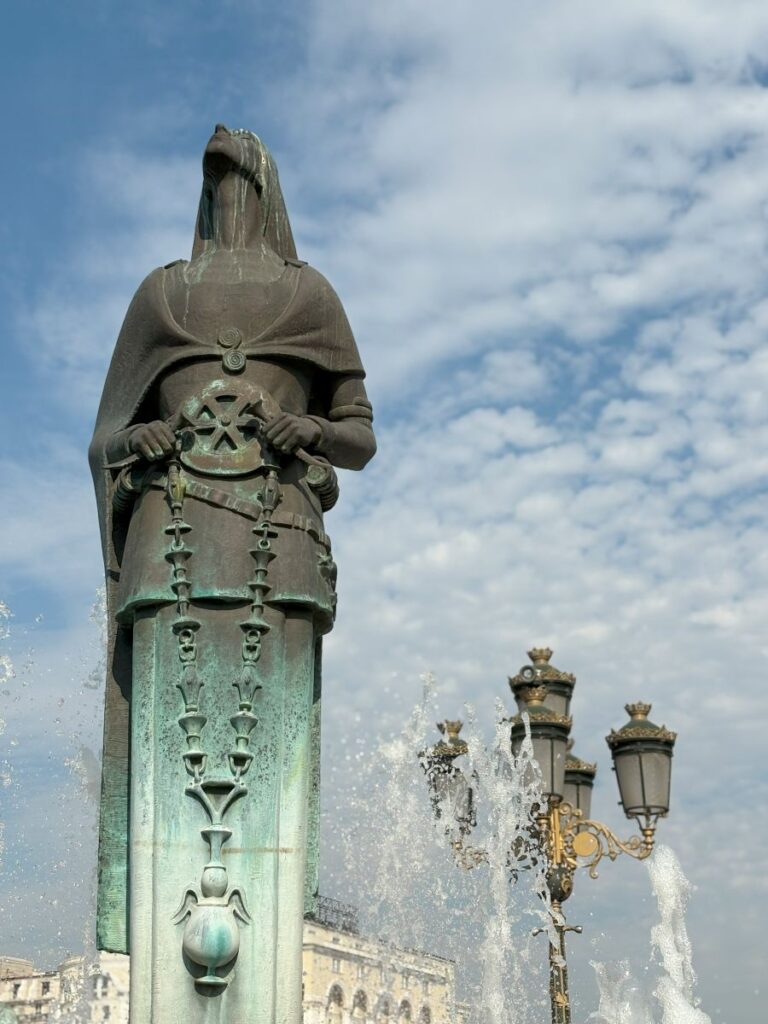
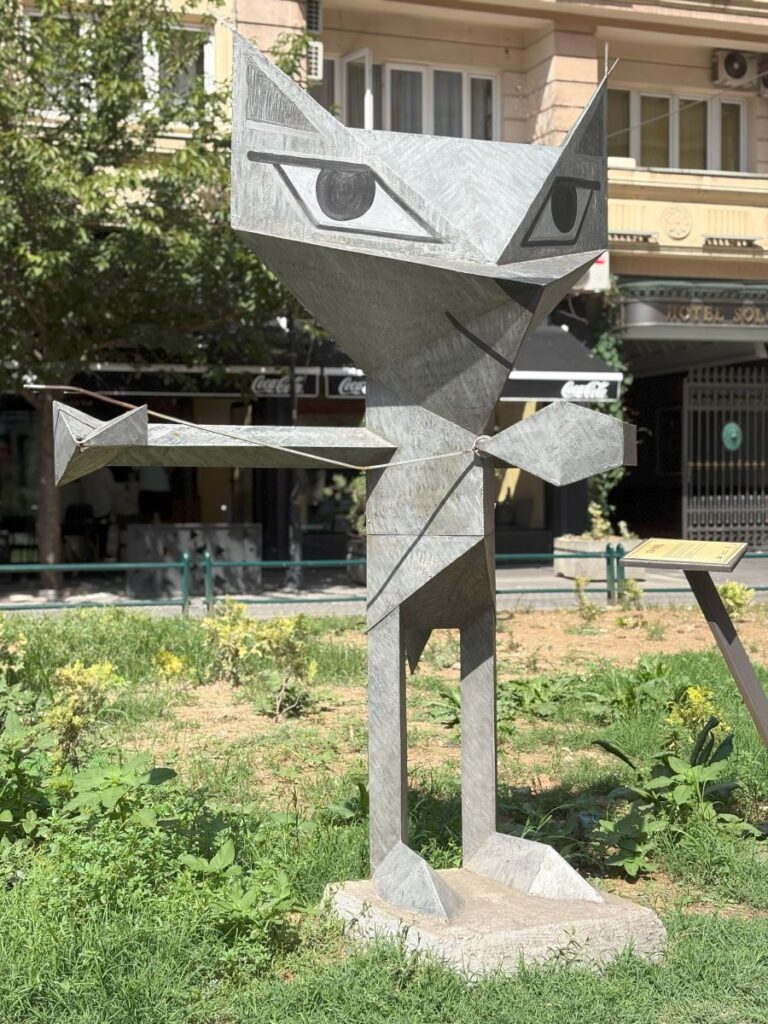
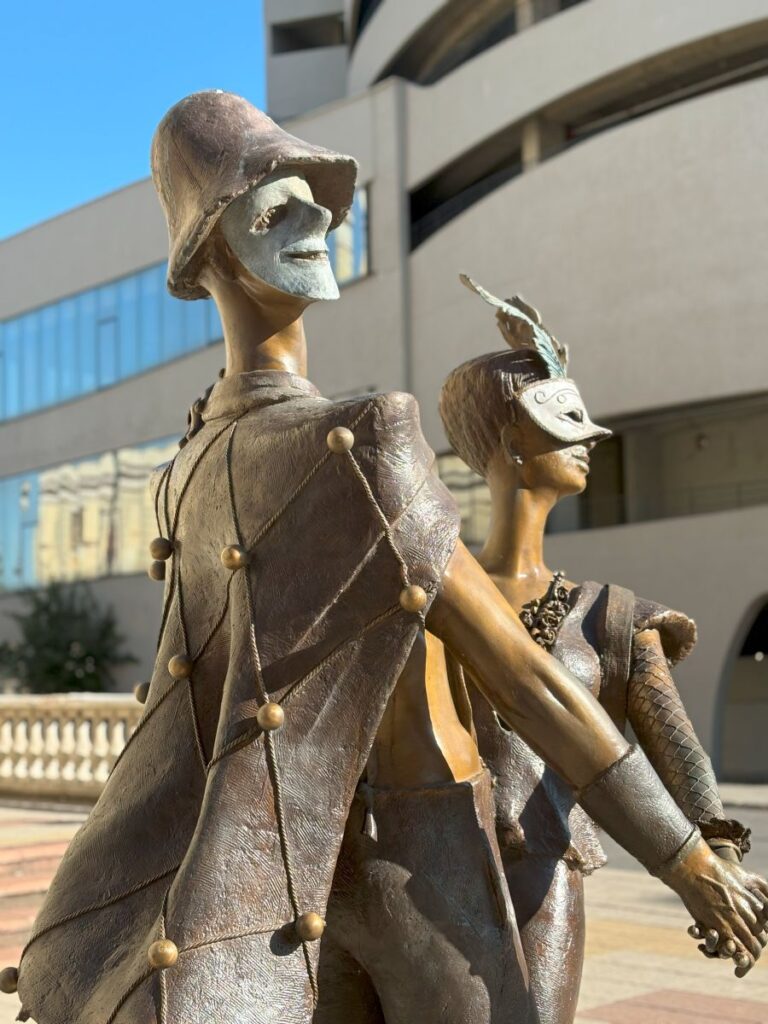
Here is an example of some I have found. Most of the 300 statues in Skopje are located close to the city centre, one does not have to walk far afield to locate these. Simple stroll down some of the less travelled roads and lanes, and be sure to discover these for yourself.
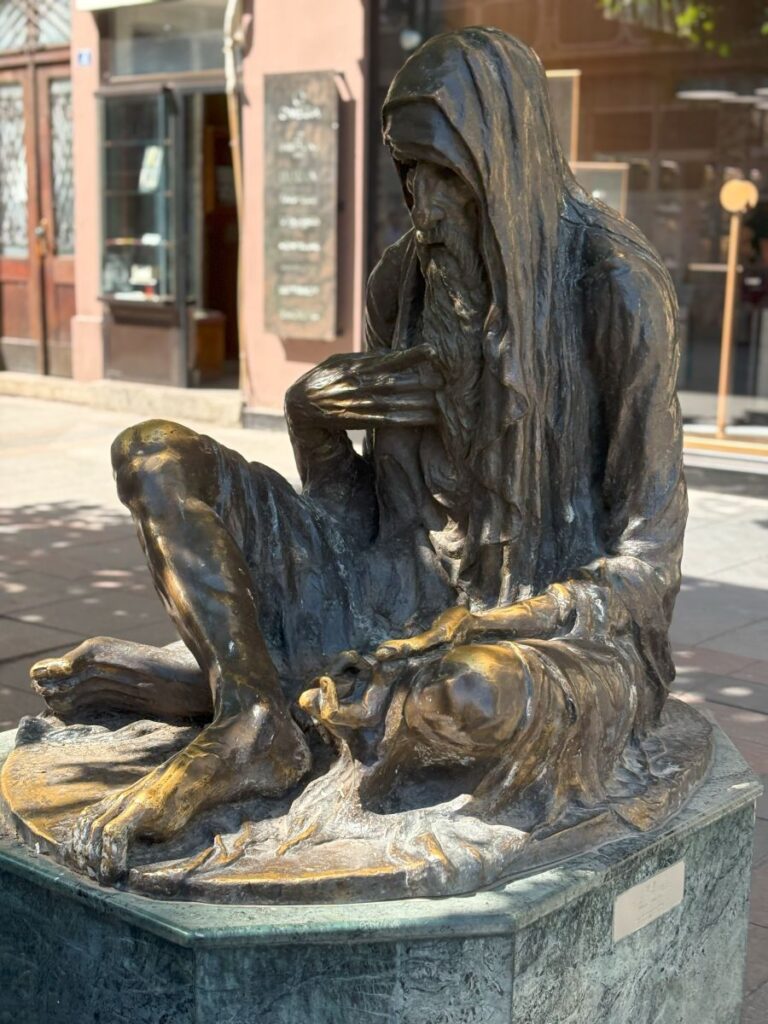
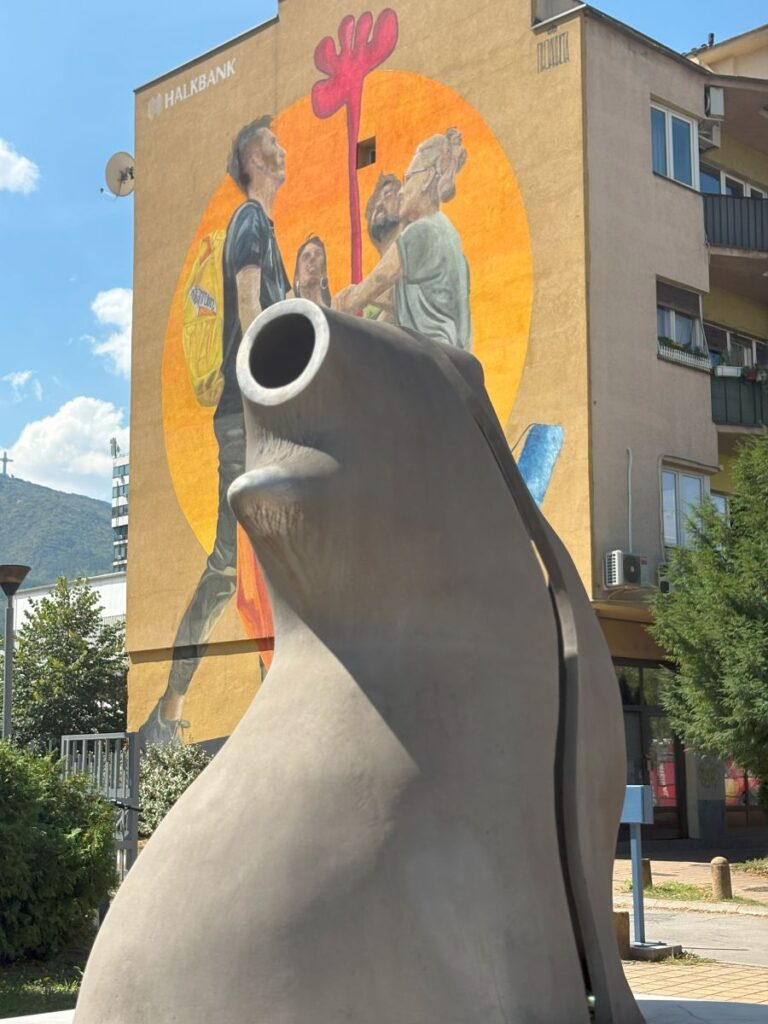
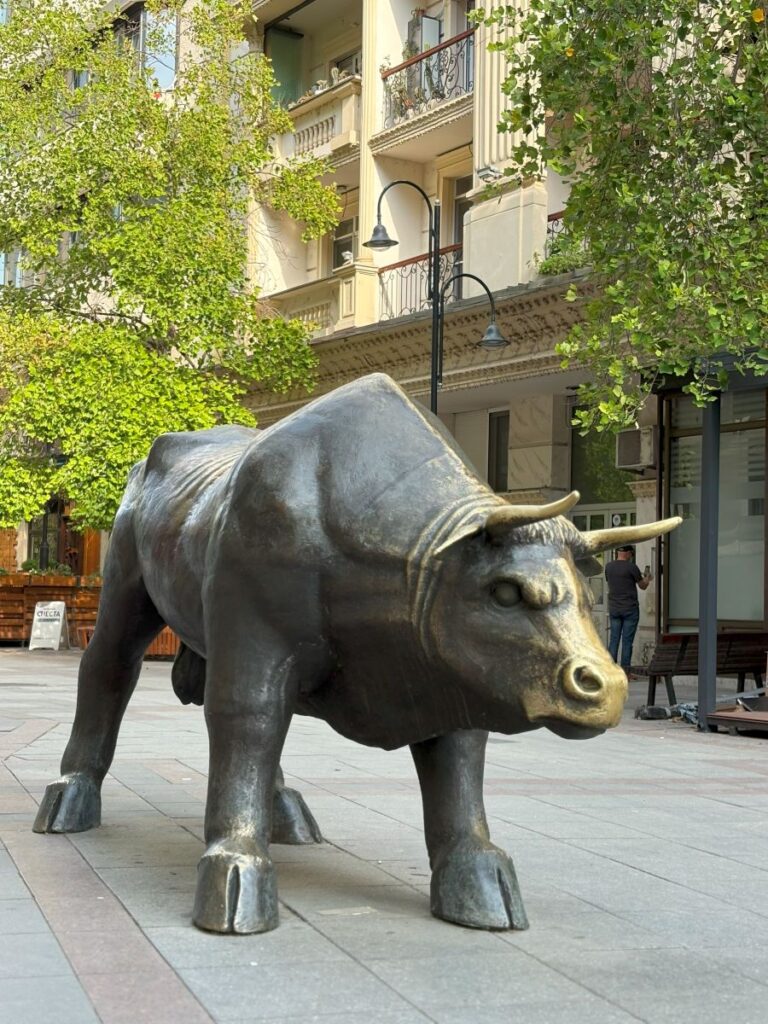
The City of Statues is not an official title, more of a joke started by the locals. Some liken their city now to a carnival or theme park. In a way I understand their point of view. But from my vantage, as a tourist who has had the pleasure of living here for a month, I really value this link to history. What is mundane for them, is a learning experience for me and a way for me to now pass that knowledge and pleasure on to you dear reader.

